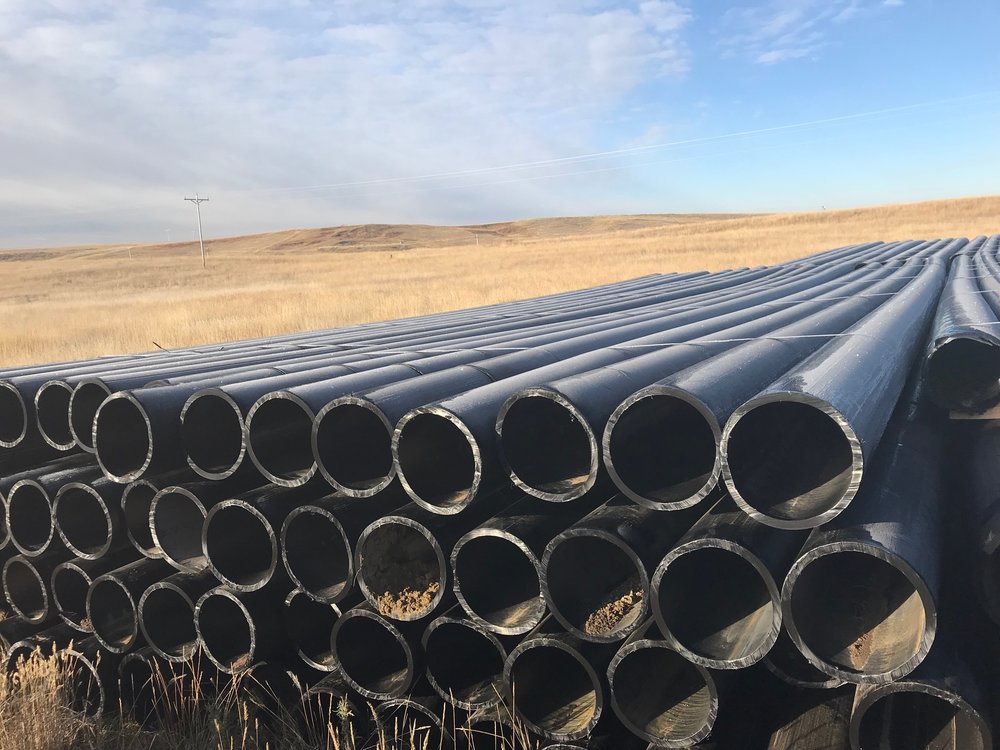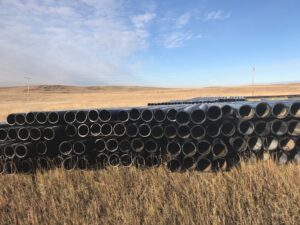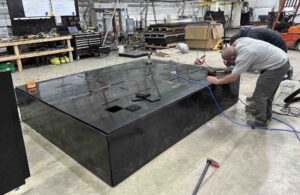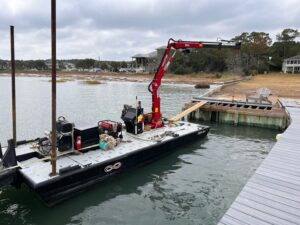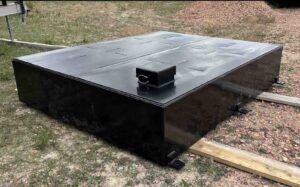The installation methods for HDPE pipe vary based on the project’s needs, environmental conditions, and the type of pipe being used. Below, we explore some of the most common methods for installing HDPE pipe.
1. Pipe Bursting
Pipe bursting is a trenchless method used to replace old or damaged pipelines with new HDPE pipe. Let’s see how it works: the new HDPE pipe has to be pulled through the existing pipe, effectively breaking the old pipe apart and replacing it in one seamless operation. This method is particularly useful for replacing sewer and water lines without the need for excavation procedures.This option is cost-effective and less disruptive.
Advantages:
- Minimal excavation required
- Cost-effective
- Compliant with federal regulations for asbestos cement (AC) pipe removal
2. Horizontal Directional Drilling (HDD)
Horizontal Directional Drilling (HDD) is another method which is ideal for installing HDPE pipe in situations where traditional excavation is not feasible (examples of situations: crossing beneath rivers, roads, or other obstacles). In this method, a borehole is drilled horizontally, and the HDPE pipe is pulled through the hole. HDD is particularly beneficial for projects that require minimal surface disruption.
Advantages:
- Minimal surface disruption
- Suitable for crossing obstacles like highways and rivers
- Reduces the need for open trenches
3. Micro-Trenching
Micro-trenching is a method used primarily for installing smaller HDPE conduits, such as those for fiber optics or electrical lines. A narrow trench is cut into the ground, and the pipe is laid in place before the trench is backfilled. This method is fast and minimally invasive, making it ideal for urban environments where traffic disruption must be minimized.
Advantages:
- Quick installation
- Minimal traffic disruption
- Ideal for urban settings
4. Plowing
Plowing involves the use of a plow blade to create a narrow trench (furrow) in the ground, into which the HDPE pipe is directly placed. The soil has to be displaced but not removed, this allows the pipe to be installed quickly without the need for extensive excavation. This method is often used in rural or agricultural settings.
Advantages:
- Quick installation
- Minimal soil disturbance
- Suitable for long, straight runs
5. Direct Burial
Direct burial is one of the simplest and most straightforward methods of installing HDPE pipes. Professionals dig a trench and lay the pipe in the trench, after that they fill it back in. This method requires careful consideration of factors such as trench depth, soil conditions, and proper bedding to ensure the pipe’s longevity.
Advantages:
- Simple and straightforward
- Suitable for a wide range of applications
- Can be used in various soil conditions
6. Slip Lining
Slip lining is a trenchless rehabilitation method used to repair or reinforce existing pipelines. In this method, a new HDPE pipe is inserted into an existing, deteriorated pipe, effectively creating a new line within the old one. This technique is particularly useful for restoring older pipelines without the need for complete replacement.
Advantages:
- Trenchless installation
- Cost-effective rehabilitation of existing pipes
- Minimal disruption to surrounding areas
Conclusion:
Each method for installing HDPE pipes has its unique advantages, making it important to choose the right method based on the specific needs of your project. Whether you require a trenchless solution like pipe bursting or slip lining, or a more traditional approach like direct burial, HDPE pipes offer flexibility and durability across a range of installation methods.
If you are looking for high-quality HDPE pipe production, contact Legacy HDPE. We prioritize quality and customer satisfaction, ensuring durability, efficiency, and cost-effectiveness. For more information about our products and services, please contact us directly at Tel: 307-391-0731

